The New Jaeger-LeCoultre Reverso Tribute Chronograph
The ultimate sports complication is a tribute to the original vocation of the Reverso as a sports watch for polo players.
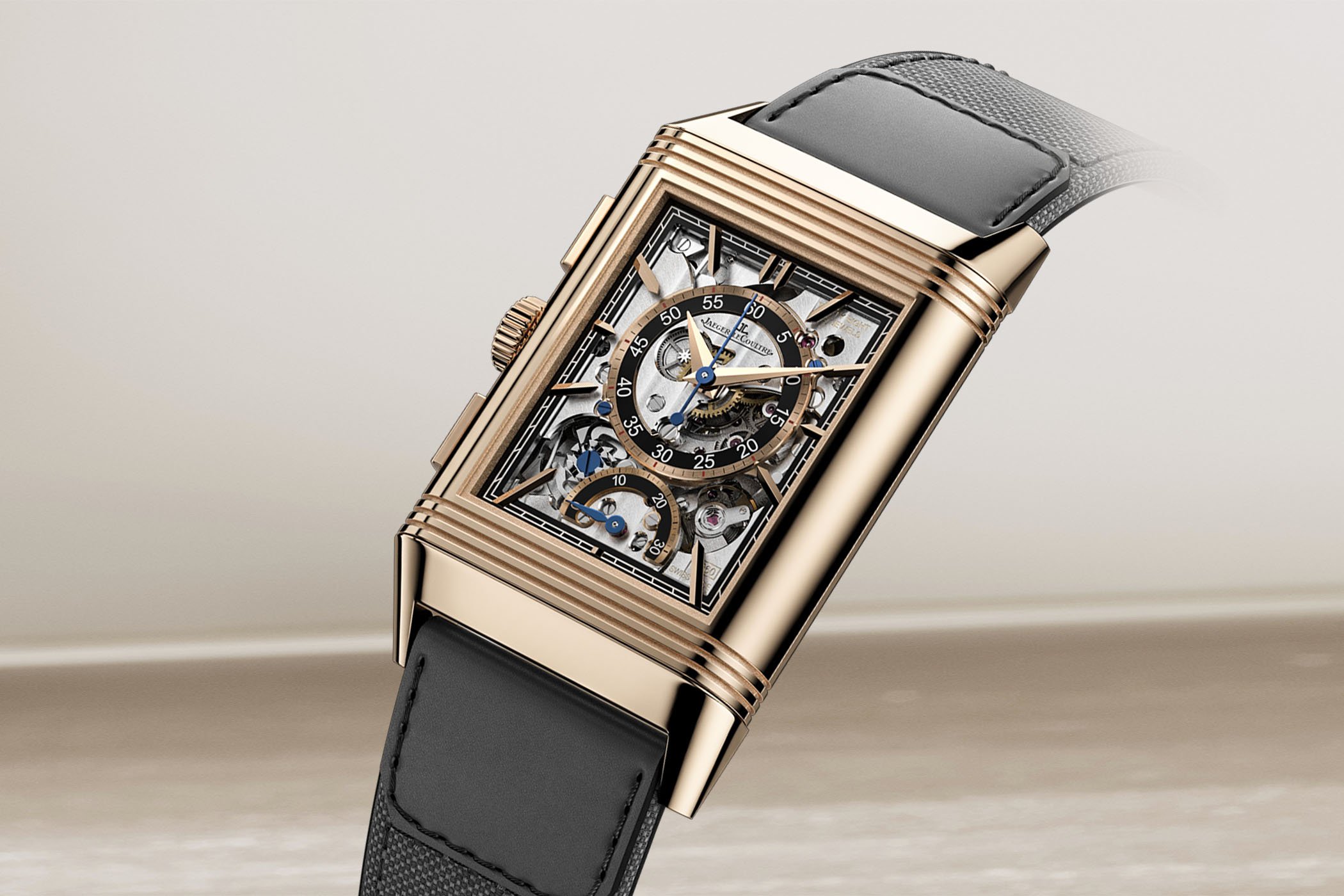
Jaeger-LeCoultre‘s Reverso, introduced in 1931, is a legitimate icon in the watchmaking world. Originally designed for polo players fed up with smashing the glass on their watches, the Reverso provided a clever solution in the form of a swivelling protective case. With its sleek Art Deco personality and two faces, the Reverso embraces its original vocation as a sports watch and reappears this year with a chronograph, retrograde minutes and a second time display. Powered by a new in-house movement – the calibre 860 – the Reverso Tribute Chronograph, in pink gold and steel cases, draws inspiration from the first Reverso chronograph of 1996.
1996 Reverso Chronographe Retrograde
Coinciding with the Reverso’s 60th anniversary in 1991, an ambitious plan was implemented to release six complicated Reverso models in ten years. The timing of these releases was a clear signal that the destructive avalanche of cheap quartz movements had not decimated the potential to start building classical watchmaking complications again. Four years in the making, the Reverso Chronographe Retrograde appeared in 1996. Not only was it the first shaped chronograph movement in a rectangular case for JLC, but it was the first manual-winding integrated chronograph to be developed from scratch in the post-quartz era – even beating A. Lange & Söhne to the finish line with its L951.1. If you are interested in the full story of calibre 829, we have a fascinating, in-depth article in our Collector’s Corner. Below, the 1996 Reverso Chronographe Retrograde and its impressive calibre 829.
Reverso Tribute Chronograph
The rectangular cases – in 18k pink gold or steel – are 49.4mm long and 29.9mm wide with a thickness of 11.14mm. Polished throughout, the cases display the signature gadroons – horizontal engraved lines at either end of the case – that underscore its elegant and streamlined Art Deco origins. Compared to its distinguished 1996 ancestor, the pushers and the crown on the right side of the case are less pronounced and better integrated, and both dials have been entirely redesigned.
The main dial belies the complexity of its movement and displays a wonderfully serene sunray-brushed background. The stainless steel version has a grey dial produced with an innovative ADL (atomic layer deposit) process using ultra-thin layers of titanium oxide, while the pure black dial provides an elegant contrast to the warmth of the pink gold case. Applied baton markers on the signature chemin de fer (railroad) minutes track are indicated by elegant Dauphine hands.
Turning the watch over reveals a more complex, openworked dial revealing the chronograph mechanism. Beneath the bridges with their Côtes de Genève decoration, the column wheel, the gear train and the balance wheel can be appreciated. Matching the front dial, the reverse dial also has baton markers applied to the railway minute track, which appear suspended over the calibre.
To consult elapsed intervals of time, there is a large chronograph seconds display on a central ring and a 30-minute totaliser on an arc at 6 o’clock; both are picked out with black tracks, framed by a precision gold track and indicated with blued steel hands. Adding even more complexity to the picture, the 30-minute counter of the chronograph is retrograde, and its blued hand jumps back to zero in less than 1/8th of a second.
Calibre 860
With such a distinguished ancestor as inspiration, the new calibre 860 is a fully integrated hand-wound chronograph movement designed, produced and assembled by JLC in the Vallée de Joux. Like its predecessor, the challenge was to house circular chronograph indications in a rectangular case and maintain legibility. The shaped rectangular movement designed to match the case is a column-wheel chronograph with a horizontal clutch. The choice of a horizontal clutch over a vertical one was to maintain the thickness of the movement – just 12mm – at a minimum.
To display the hours and minutes on the front and reverse dials, the movement has to power two sets of hands that move in opposite directions. With 300 components on board and a power reserve of 52 hours to animate the dual time functions and the gas-guzzling chronograph and retrograde displays, calibre 860 is a true feat of miniature engineering.
Returning to the Reverso’s original ties to the world of polo, two straps, a canvas-and-calfskin strap and an all-leather strap are provided with the watch and made by the prestigious Argentinian polo bootmaker Casa Fagliano.
Price to be confirmed. For more information, please visit jaeger-lecoultre.com.

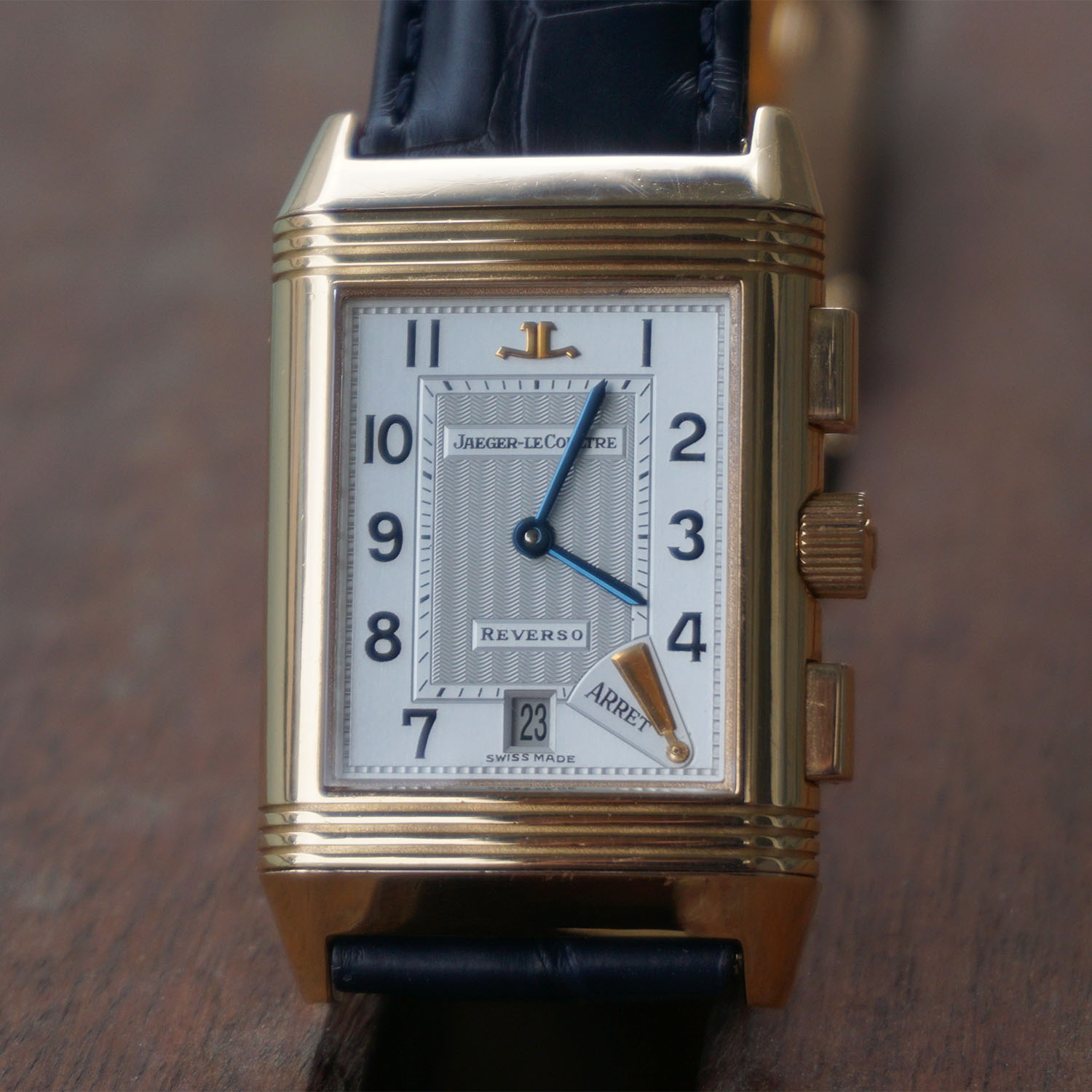
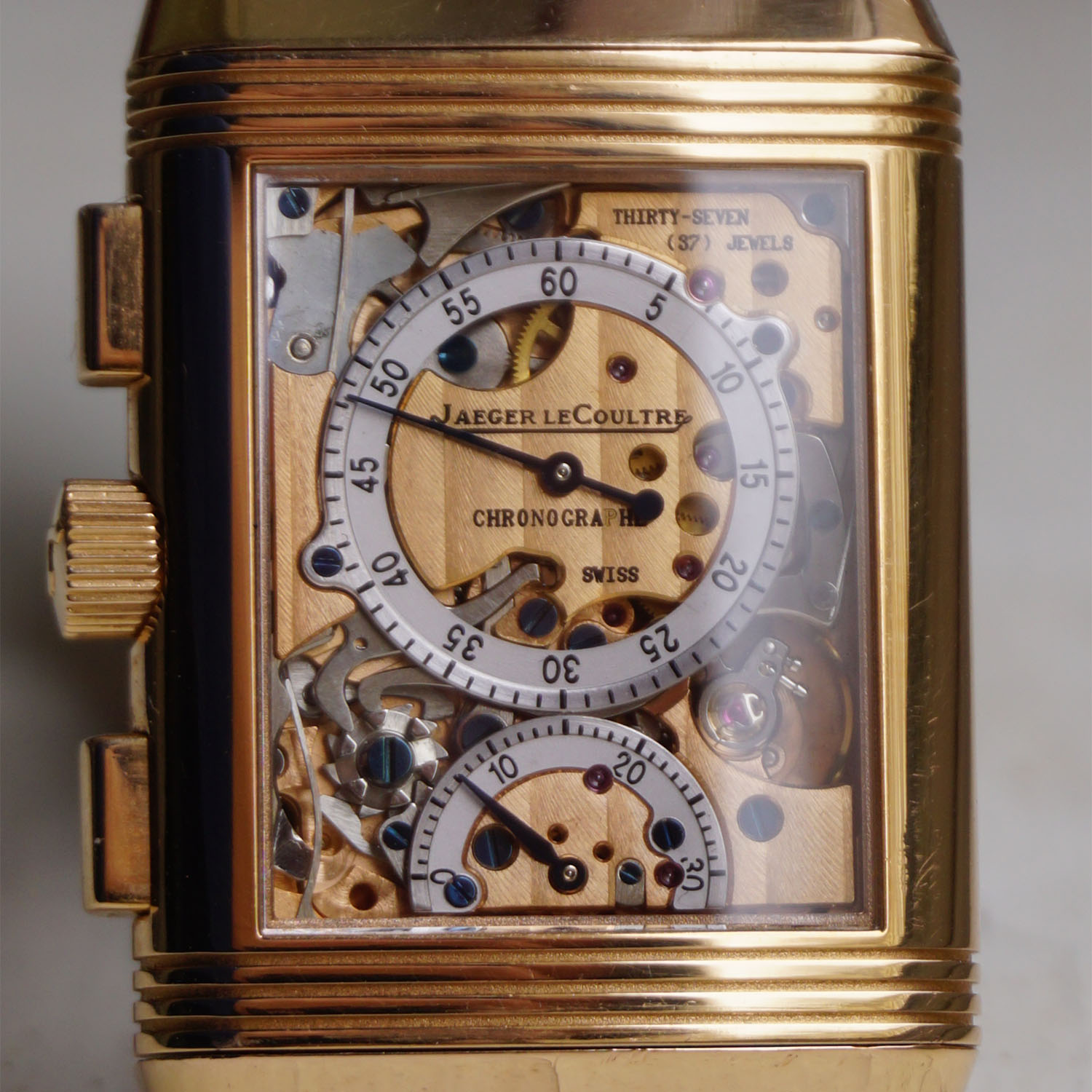
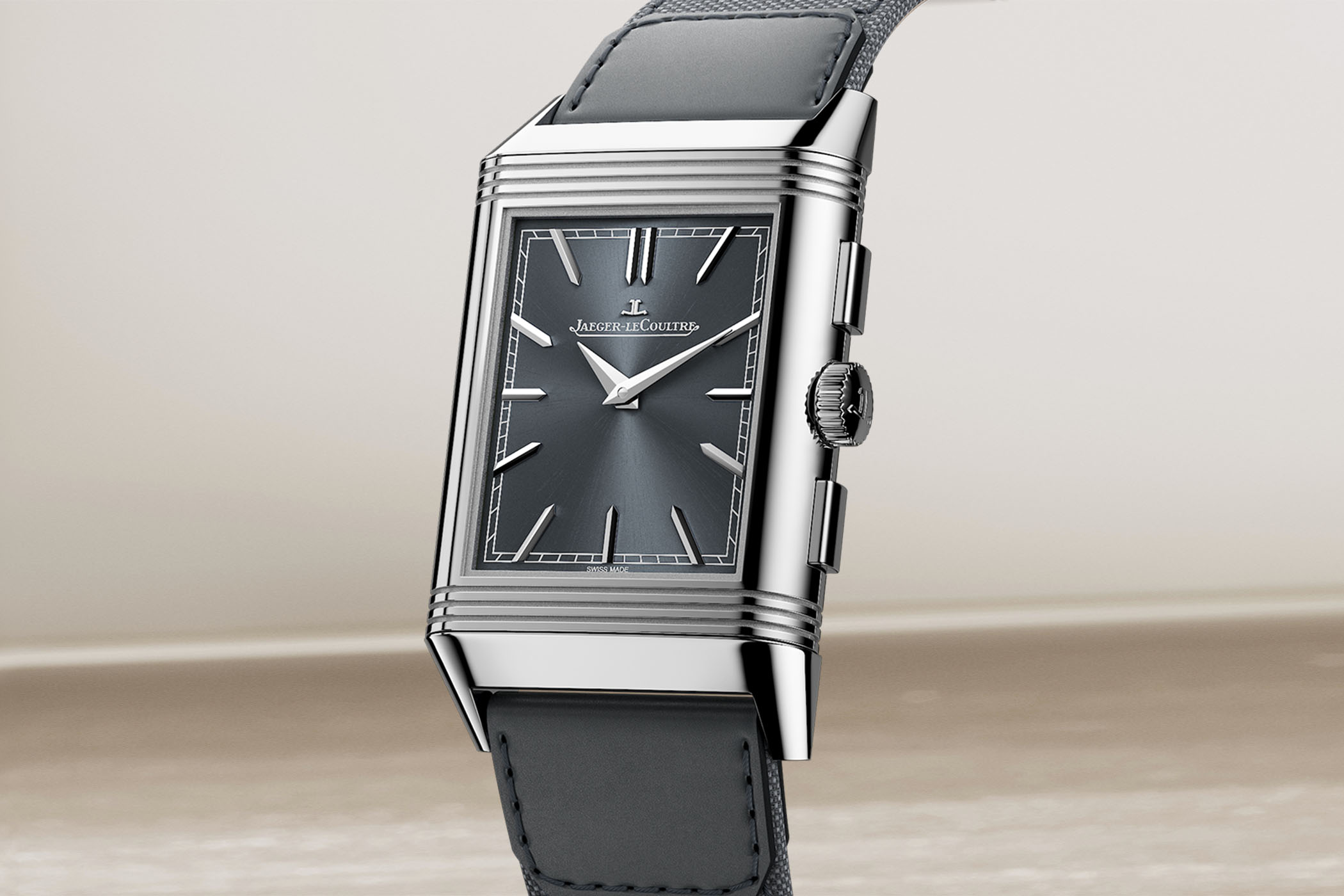
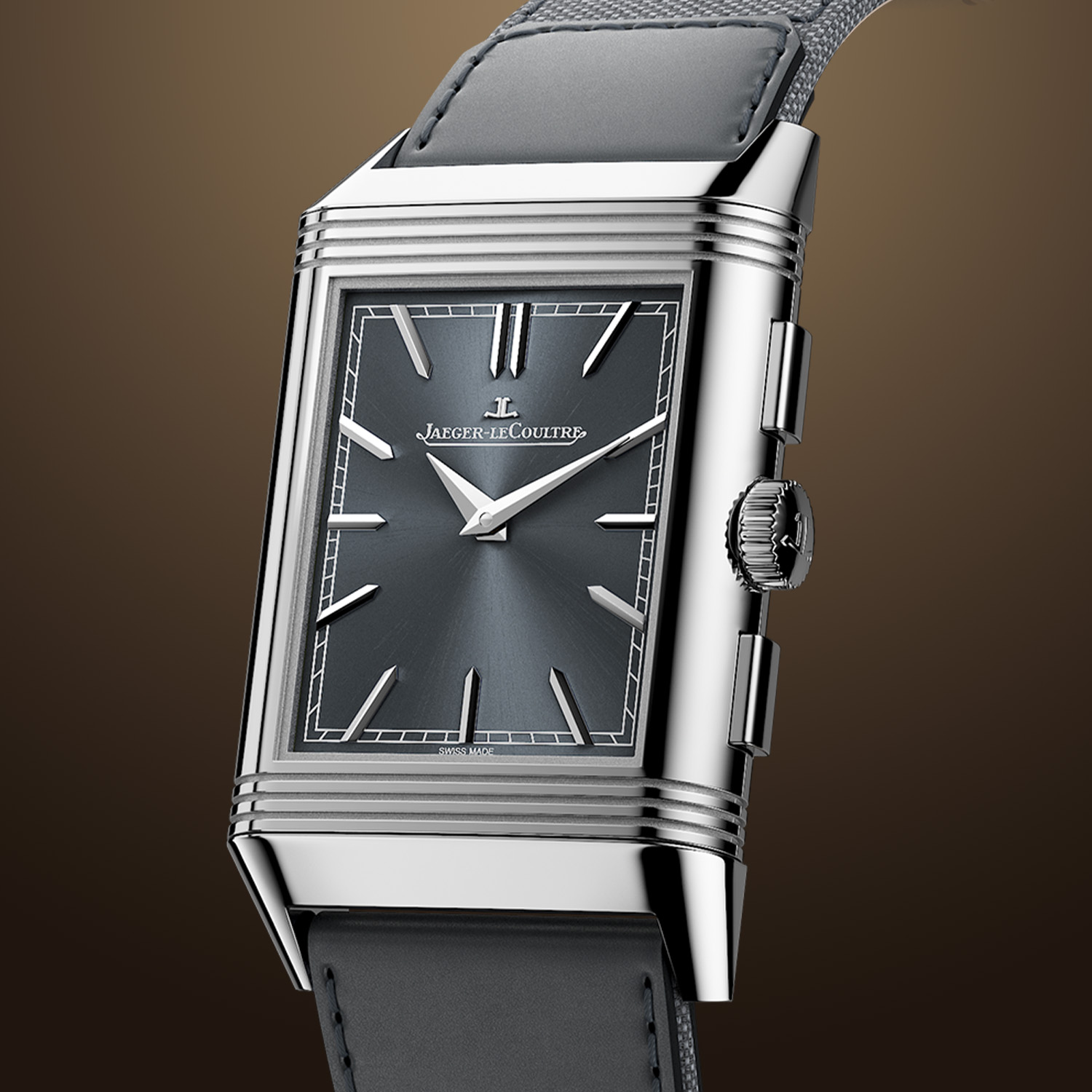





3 responses
Great. Instead of fixing a few issues and leaving the original alone they do this “downgrade”. The date, central seconds and on/off chrono indication made it special. As is with too many brands, the house designer barges in and spoils something that needed nothing of what he/she/it/whoever offered. Bravo.
“Price to be confirmed” and “Price upon request” are codes for “I can’t afford this”.
@Andrew it’s 23,8k EUR for the steel version and 41,7k EUR for the gold version both incl. 19% VAT in Germany.
IMHO both one of the best novelties at W&W23, but the pricing is just bonkers.
I don’t know, what they are smoking in the Le Sentier.